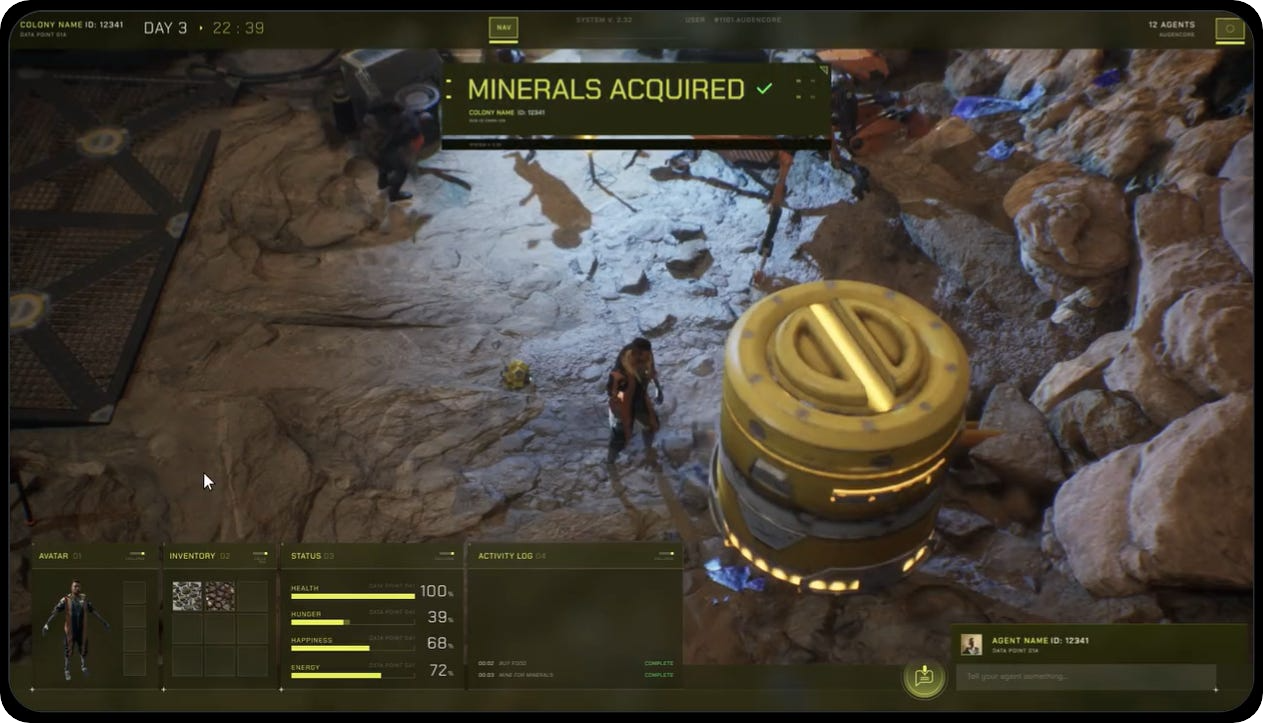Plus, participate in weekly giveaway of 60,000 USDT prize pool!
Parallel's AI Agent Platform Wayfinder: Benefiting from on-chain game agents and integrating DeFi multi-scenario applications
Author: bankless
Compiled by: Zen, PANews
Wayfinder is an emerging project dedicated to revolutionizing agents in an on-chain environment. The project is designed around $PROMPT and will hold a Token Generation Event (TGE) in Q1 2025.
As the industry continues to grow interest and attention in Wayfinder, this article will explain what Wayfinder is, how it works, and how to earn $PROMPT by staking $PRIME.
What is Wayfinder
In April 2023, researchers at Stanford University published a paper detailing a case study in which 25 AI players simulated human behavior in an RPG game. This research inspired the developers of the Parallel card game to begin experimenting with developing an AI-centric game, which eventually developed into the upcoming Parallel Colony.
The idea is to create a new gaming paradigm where human players can control and benefit from a never-ending stream of gaming agents with unique personalities that learn from experience, accumulate resources on-chain, and influence and battle each other.
In order to realize Colony's vision, the Parallel team decided to develop a dedicated AI infrastructure. This decision led to the release of the Wayfinder white paper and the launch of the Wayfinder platform. Currently, the Wayfinder platform is online, but it is still in the closed Alpha testing phase, and its infrastructure is still under development.
It is worth noting that although Colony catalyzed the birth of Wayfinder, Wayfinder is designed not only to serve Colony or games. The system has on-chain compatibility and once opened, it will support various on-chain agents on multiple networks such as Ethereum, Solana, Base, etc.
How Wayfinder works
In the Wayfinder ecosystem, users can create agents to interact with blockchain applications on their behalf. For example, operations such as exchange, minting, cross-chain bridging, deployment, etc. can be completed through natural language instructions without manual clicks.
To help agents navigate in the on-chain environment, Wayfinder introduces Wayfinding Paths, which are predefined workflows. These paths are like roadmaps, providing navigation guidance for specific goals (such as completing a cross-chain DeFi revenue strategy).

This design facilitates an ever-growing knowledge graph that serves as a form of collective memory for Wayfinder agents, enabling them to continually self-improve without having to repeat mistakes or make decisions from scratch.
At the heart of the system is the upcoming native token $PROMPT, which can be used for staking to propose and maintain navigation paths and be rewarded through bounties or usage fees for new paths. $PROMPT may also be used to purchase advanced proxy features such as expanded storage, etc.
Earn $PROMPT by staking $PRIME
The planned total supply of $PROMPT is 1 billion, of which 45% will be allocated to community members who need to stake Parallel's token $PRIME within Wayfinder.
Staking activity has begun in June 2024 and will last until June 2027. The longer the lockup period, the greater the multiplier of the points allocated to $PROMPT that users will eventually receive. The specific benefits are not yet clear, but if the market value of $PROMPT reaches billions of dollars, this could bring considerable returns.
To participate, users only need to prepare some $PRIME on Ethereum or Base and follow the steps below:
- Go to cache.wayfinder.ai
- Log in using wallet to sign verification message
- Click the Cache PRIME button, then click Cache PRIME again
- Read the tips about choosing a lockup period and click “I Got It” – make sure not to stake any funds you can’t access right away!
- Enter the amount of PRIME you want to stake and click “Next”
- Select the desired lockup period, ranging from 21 days to 3 years, and click the “Preview PRIME Stake” button
- Finally confirm the settings, click "Cache PRIME", and complete the transaction with your wallet
- After staking, you can track your scores and badges in Wayfinder’s Overview page and deposit and withdraw them after the staking period ends.
Summarize
Wayfinder and a16z's Daydreams technology solve the same problem: how to enable on-chain agents to continuously learn and independently complete complex goals.
The core difference between the two lies in their unique architectural approaches. Wayfinder is centered around navigation paths and $PROMPT staking, while Daydreams is centered around the Hierarchical Task Network (HTN) and has yet to touch on token economics.
If you are into top on-chain games, are interested in AI, and expect these fields to become more popular and further intersect in the coming years, Wayfinder may be one of the interesting opportunities at the moment.
You May Also Like

SEC Approves Bitwise ETF, Then Immediately Reverses Decision Hours Later

CertiK releases Skynet stablecoin rating report: USDT, USDC, PYUSD, RLUSD lead the pack





